Death
Batbaby
Posted By: Paul - Fri Apr 12, 2013 -
Comments (5)
Category: Animals, Death, Horror, Humor, Parody, Music, Fictional Monsters
Bernard Wheatley, Hermit

The man depicted above is Dr. Bernard Wheatley who, after the deaths of his family, chucked a flourishing career to live as a hermit on the Hawaiian island of Kauai.
Read a long and fascinating article about him here.
In 1957 Dr. Bernard Wheatley - an African American physician from the Virgin Islands - made a pilgrimage to Kalalau Valley. Distraught after the death of his wife and son in a car accident, he kept questioning the meaning of life and other ontological problems until the answers finally came. In a remarkable religious conversion-like revelation he realized that life is eternal. He abandoned his medical practice, sold all his worldly possessions and sought a quiet, secluded place where he could earnestly seek truth without distraction. He arrived on the remote Island of Kauai and after seeing Kalalau from a ridge-top lookout in Kokee, he knew that he had found his home.... He passed on December 3, 1991 at the age of 72. His ashes were spread in Kalalau.
Posted By: Paul - Wed Apr 10, 2013 -
Comments (4)
Category: Death, Religion, Hermits, 1950s, 1960s, South Pacific
Upright Burial
Over in Australia, Darwin City Council Alderman Gary Lambert is in the news for proposing that bodies should be buried upright, in order to save space in the local cemetery. He also thinks the corpses should be frozen before burial because, "If it's not frozen, it will wobble and move, and this makes sure that the body is in a straight position and can fit inside the hole."His idea about burying bodies frozen is actually more original than burying them upright, because those who worry about making the burial process more efficient have been pushing the upright burial concept for a long time. In fact, there's already an Australian company, Upright Burials, dedicated to promoting this method. Their infographic is below. As you can see, they've solved the problem of how to bury a body unfrozen without it wobbling and moving.
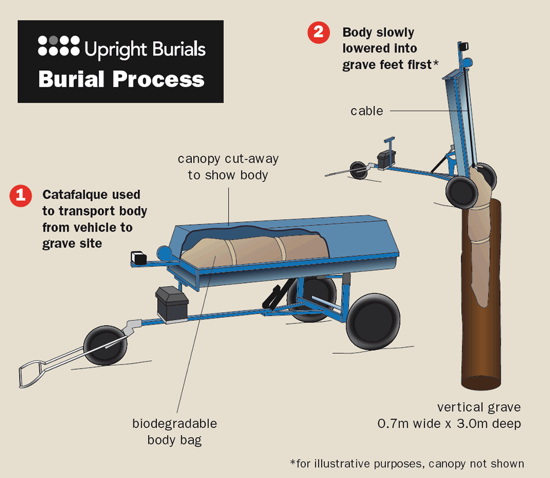
Posted By: Alex - Tue Mar 19, 2013 -
Comments (7)
Category: Death
Chicken Plucker
A new height in boredom--until the actual killing begins.
Posted By: Paul - Mon Mar 04, 2013 -
Comments (6)
Category: Animals, Boredom, Death, Food, Industry, Factories and Manufacturing, Rube Goldberg Devices
Charley Says
In this dangerous world, God help all kids who don't have a child-sized cat friend with feline Tourette's Syndrome.
So popular, they have been collected on DVD.
Not to be confused with this other "Charlie says!"
Posted By: Paul - Wed Feb 27, 2013 -
Comments (10)
Category: Anthropomorphism, Death, Disasters, PSA’s, Advertising, Candy, Cats, Europe
Doc Owens, Con Man
As early as December 1900, the notorious Doc Owens was making headlines, having established his racket of fleecing sea-going sheep.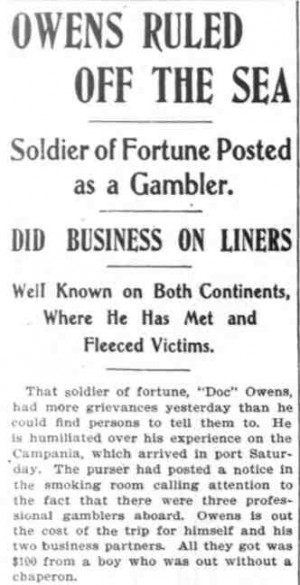
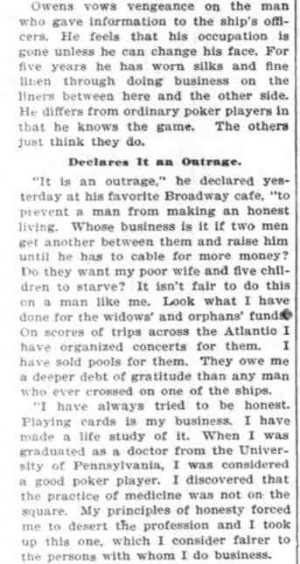
READ LEFT-HAND COLUMN, THEN RIGHT-HAND COLUMN, THEN SAME FOR THE TWO FOLLOWING.
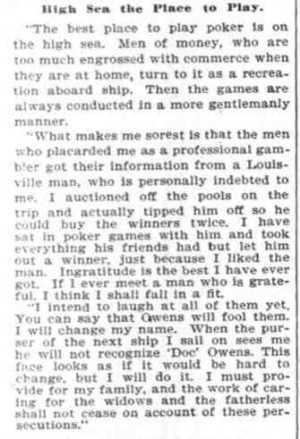
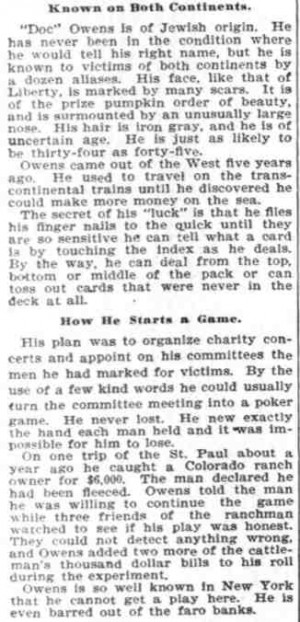
Three years later, The New York Times did a special feature on Owens and his fellows (with his photo miscaptioned).
Click here for very readable PDF download.
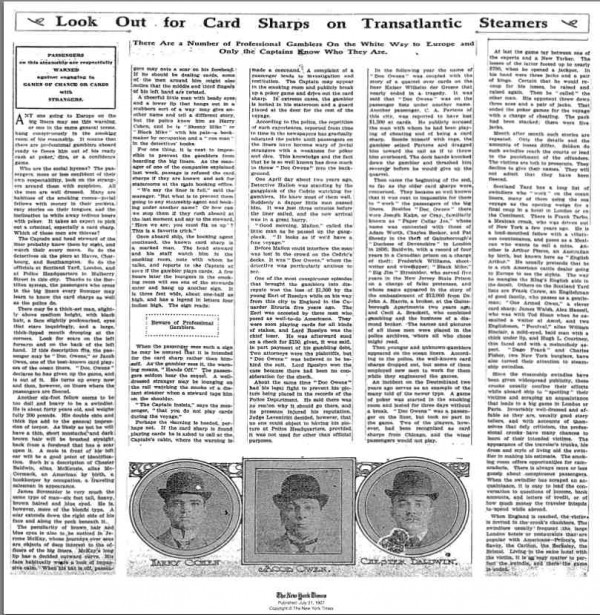
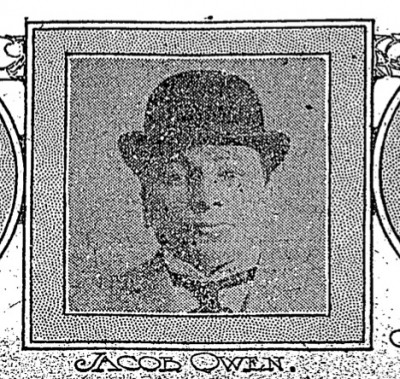
But Owens was to meet poetic justice in 1912, as our final piece reveals.
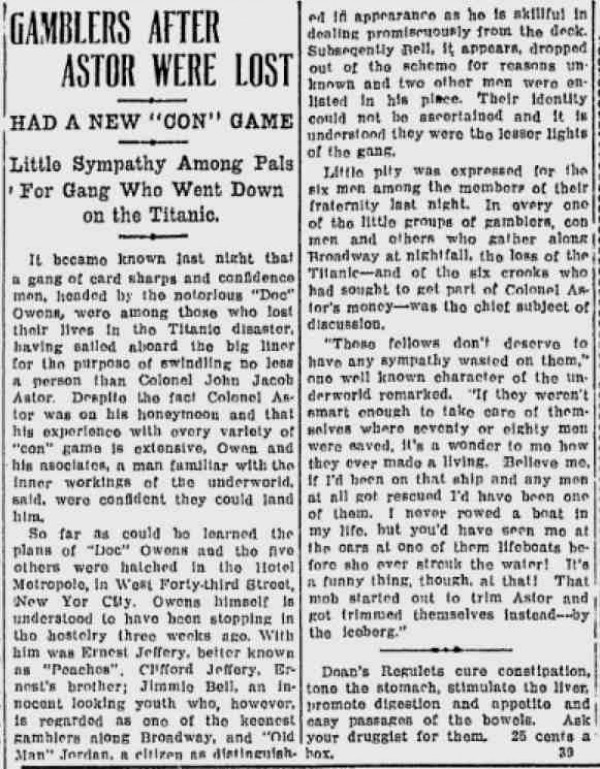
Posted By: Paul - Fri Feb 15, 2013 -
Comments (2)
Category: Crime, Death, Disasters, Frauds, Cons and Scams, Oceans and Maritime Pursuits, 1900s, 1910s, Gambling, Casinos, Lotteries and Other Games of Chance
Cremain Art
Alabama artist Sergio Protillo adds something a little special into his paint — cremains. People bring him the cremains of their loved ones, and he mixes them into some paint and creates a painting that's "like an additional memory to the person's life." He says one client cried when he saw his family member's cremain painting. [whnt.com]


Posted By: Alex - Wed Feb 13, 2013 -
Comments (4)
Category: Art, Death
Musical Decomposition
It comes with a headstone that tells visitors what is playing down below as well.
Posted By: Alex - Tue Jan 22, 2013 -
Comments (12)
Category: Death
A Strange Burial, 1736
From The History of Lymington, and its immediate vicinity, by David William Garrow (1825):"Samuel Baldwin, Esq. sojourner in this parish, was immersed without the Needles, sans ceremonie, May 20, 1736. It was ever his request, whilst living, that his body might be so disposed of after his death, from a superstitious notion that his wife, in the instance of her surviving him, would dance over his grave, actuated by a spirit of vindictiveness for his conjugal infidelity."

Lymington Parish Church
Update: "without the Needles" refers to a location — Needles Point.
Posted By: Alex - Mon Jan 21, 2013 -
Comments (9)
Category: Death, Obituaries, Eighteenth Century
Zulu Blowgun Free
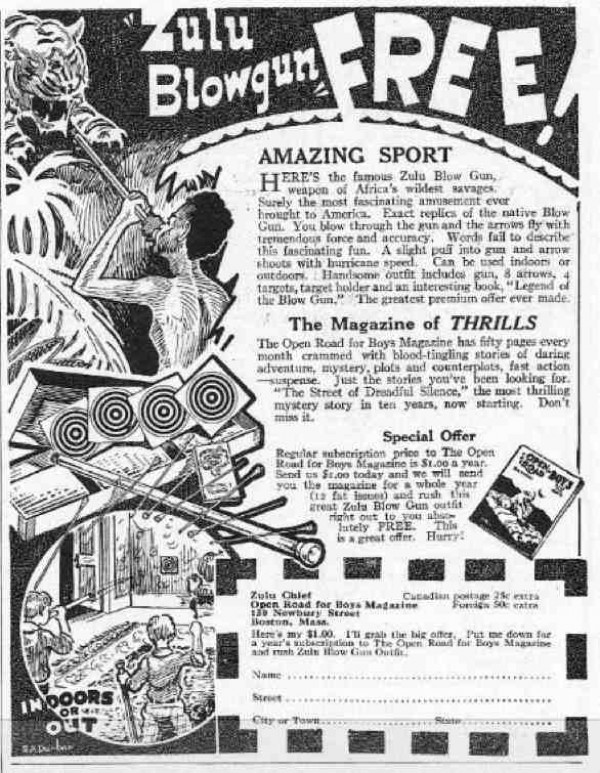
Oh, just imagine the glorious lawsuit possibilities if this toy were offered today!
Original ad here.
Posted By: Paul - Tue Jan 15, 2013 -
Comments (7)
Category: Death, Stereotypes and Cliches, Toys, Lawsuits, 1920s, Africa

| Who We Are |
|---|
| Alex Boese Alex is the creator and curator of the Museum of Hoaxes. He's also the author of various weird, non-fiction, science-themed books such as Elephants on Acid and Psychedelic Apes. Paul Di Filippo Paul has been paid to put weird ideas into fictional form for over thirty years, in his career as a noted science fiction writer. He has recently begun blogging on many curious topics with three fellow writers at The Inferior 4+1. Contact Us |




